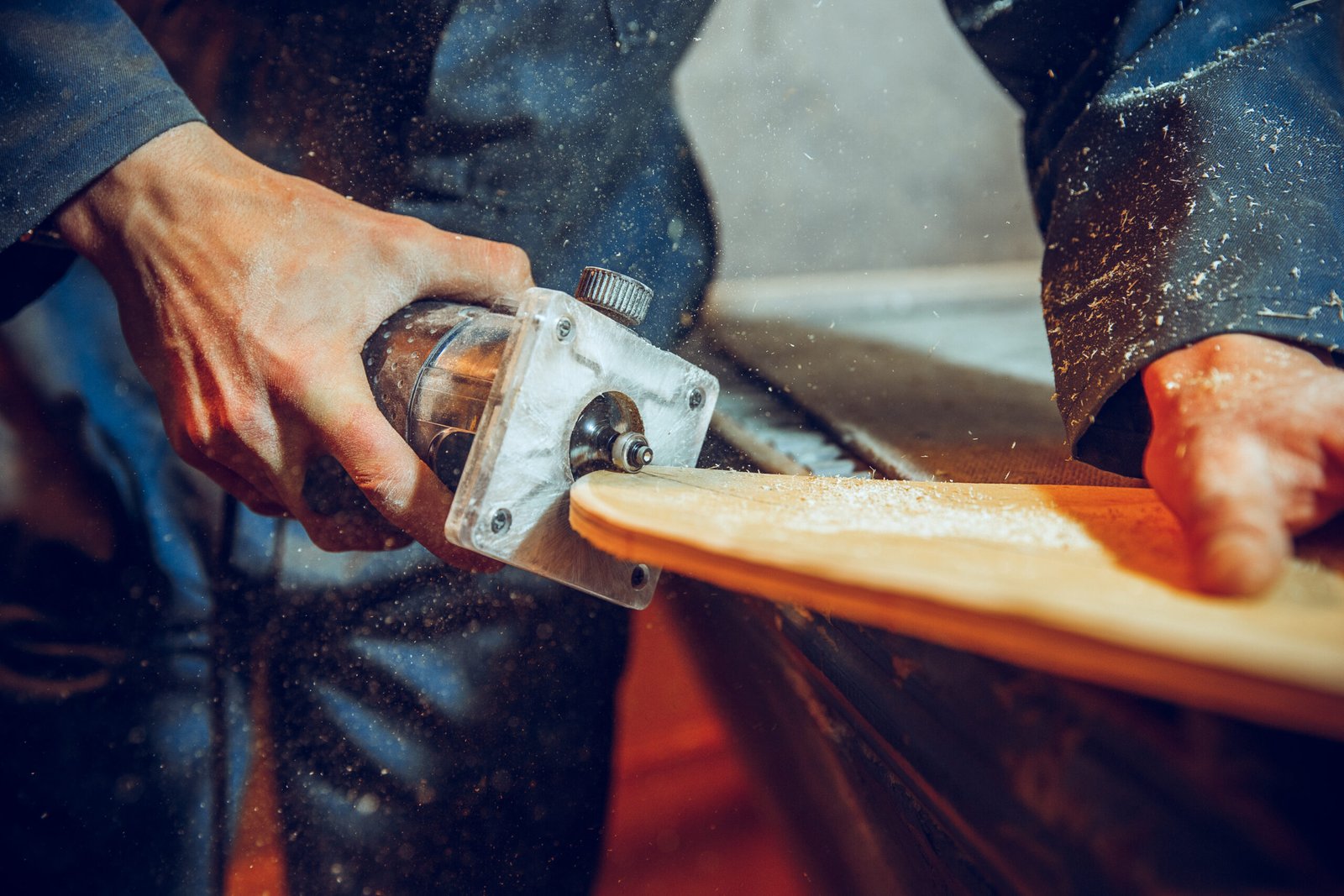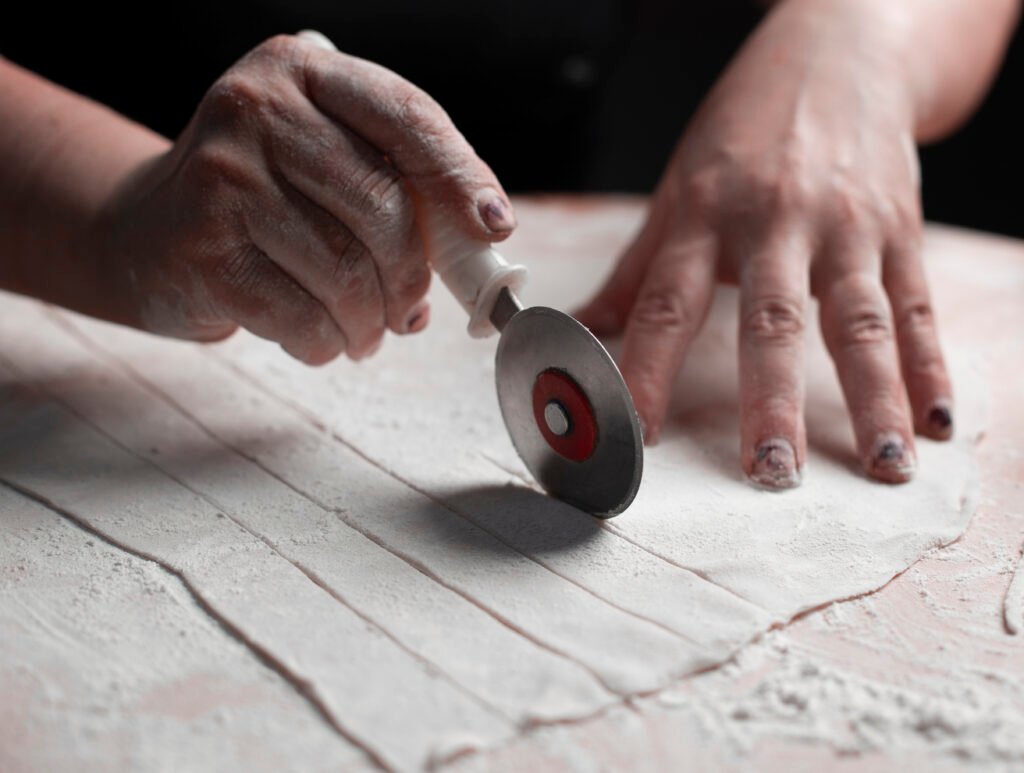
Cutting holes and circular pieces of wood is a common task in many woodworking projects, whether you’re installing plumbing, crafting furniture, or designing intricate wood patterns. Choosing the right saw can make this task easier and more precise. Which Saw is Used to Cut Holes and Circular Pieces of Wood, helping you select the right tool for your next DIY or professional woodworking project.
1. Circular Saw: Ideal for Cutting Small Circular Pieces
Best For: Small circular pieces in wood
Key Features:
- Portable and versatile for various cuts
- Perfect for straight cuts but can also be adapted for circular cuts with a jig
- Suitable for medium-sized wood pieces
How It Works:
A circular saw is a popular tool for cutting wood, and while it’s mostly used for straight cuts, it can also be used to cut circular pieces in wood with the help of a jig or guide. A circular saw uses a rotating blade to slice through wood quickly and efficiently, making it perfect for cutting small circular pieces, especially in larger sheets of plywood or similar materials.
Tips for Cutting Circular Pieces with a Circular Saw:
To cut a circle with a circular saw, you’ll need a circle-cutting jig or a DIY template. You can create a simple circle jig using a string attached to the center of the circle, guiding your saw along the curve as you cut. This method works well for smaller circles and ensures an even, precise cut.
2. Jigsaw: Perfect for Curved and Detailed Cuts
Best For: Cutting intricate circular shapes
Key Features:
- Lightweight and easy to control
- Can cut curves and tight circles with precision
- Versatile for both straight and curved cuts
How It Works:
A jigsaw is one of the best saws for cutting curves and small circular shapes. It uses a fine, thin blade that moves up and down, allowing it to cut in a variety of patterns, including tight circles. The jigsaw’s design makes it ideal for cutting circular pieces in wood, particularly when dealing with smaller diameters.
Tips for Cutting Circular Pieces with a Jigsaw:
For a smooth, accurate cut, it’s recommended to use a circle-cutting jig for your jigsaw. You can also create a template or use a compass to mark the circle on your wood. Once the circle is marked, drill a hole in the center to insert the jigsaw blade and start cutting along the outline.
3. Hole Saw: Best for Cutting Round Holes in Wood

Best For: Cutting holes in wood, metal, and other materials
Key Features:
- Specifically designed for cutting circular holes
- Available in various sizes for different hole diameters
- Can be used with a drill, making it convenient and easy to handle
How It Works:
A hole saw is a specialized cutting tool that attaches to a drill to cut round holes in wood, metal, and plastic. It has a cylindrical shape with teeth around the edge, similar to a crown, which slices through material as it rotates. Hole saws come in a variety of sizes, making them ideal for drilling holes for pipes, electrical outlets, or circular designs in wood.
Tips for Using a Hole Saw:
When using a hole saw, ensure the material is securely clamped to prevent it from moving while cutting. For wood, it’s best to use a pilot bit, which helps guide the saw as it cuts. If you’re cutting through metal, make sure to use a metal-specific hole saw to ensure a clean and efficient cut.
4. Bandsaw: Great for Thick Wood and Curved Cuts
Best For: Cutting curves and large, thick circular pieces
Key Features:
- Ideal for resawing and cutting thicker pieces of wood
- Perfect for intricate curves and large circular pieces
- Provides smooth, consistent cuts
How It Works:
A bandsaw features a long, continuous loop of teeth that move over two wheels, allowing it to cut through wood with precision. While it’s not always the first choice for cutting small holes or circles, a bandsaw excels when dealing with thicker materials and larger curves. It’s perfect for cutting larger circular pieces in wood.
Tips for Cutting Circles with a Bandsaw:
To cut a circle with a bandsaw, you can use a circle-cutting jig or template. Secure your wood to the bandsaw’s table and carefully follow the curve of the circle. For large circles, you may need to make multiple cuts and sand the edges afterward to smooth out any rough areas.
Key Features to Consider When Choosing a Saw for Cutting Circular Pieces and Holes
When selecting a saw for cutting circular pieces or holes, consider the following factors to choose the right tool for your project:
- Blade Type and Size: Choose a saw with a blade suitable for cutting the material at hand. Thinner blades are great for curves, while thicker blades are better for straight cuts.
- Portability: If you need a portable saw for small projects, a jigsaw or circular saw may be your best bet. For larger projects requiring heavier cuts, a bandsaw or table saw is better suited.
- Precision: For small, detailed cuts like circles in furniture pieces or delicate wood, a jigsaw or hole saw offers better precision. Circular saws and bandsaws are great for larger, more general cuts.
- Ease of Use: Consider the ease of handling and the learning curve. Circular saws and jigsaws are generally easier to use for beginners, while bandsaws may require more practice to master.
Conclusion: Selecting the Right Saw for Circular Cuts and Holes
Choosing the right saw for cutting circular pieces and holes in wood can make a huge difference in the accuracy and quality of your project. Whether you’re looking to cut a perfect circle, drill a hole, or shape intricate curves, tools like circular saws, jigsaws, hole saws, and bandsaws offer different advantages depending on your specific needs.
By understanding the unique features of each saw, you can make an informed decision and select the tool that best suits your project, ensuring clean, precise cuts every time. Always remember to take safety precautions when using power tools and to practice your technique to get the best results.
Leave a Reply